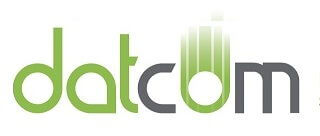During the peak holiday travel season, Southwest Airlines canceled 85% of their scheduled flights, resulting in thousands of unhappy customers.
At DatCom our ears perk up when meltdowns happen in the airline industry because we support businesses in private and medical aviation. We cringe when these stories hit the newsfeeds because we understand and embrace the complexity of air travel.
But we knew right away that we could apply the lesson from this fiasco to businesses more broadly. All business owners need to understand what happened and how to prevent it from happening to their company.

The Real Reason for the Holiday Melt-down at Southwest
Traveling for the holidays always comes with certain risks. Lost luggage, delays, and missed connections go with the territory. Winter weather is the usual culprit as flights avoid storm systems and planes undergo deicing procedures. It starts with delays, and as the minutes turn into hours, cancellations ruin everyone’s plans.
In this case, a severe winter storm caused delays for every airline, but Southwest’s problems were much worse, leaving customers with a bad taste in their mouths for traveling Southwest.
Even if the general public forgets about it in a few weeks, the affected passengers will remember that Southwest Airlines ruined their travel plans. The airline’s holiday fiasco will likely have a significant impact in 2023.

But why was Southwest Airlines hit harder than any other?
Multiple sources confirmed that it was outdated technology:
“We’ve seen these sorts of meltdowns occur on a much more regular basis and it really just has to do with outdated processes and outdated IT,” said Captain Casey Murray, president of the Southwest Airlines pilots union when speaking to CNN last week.
“Part of what we’re suffering is a lack of tools” CEO Bob Jordan told the company in a memo. “We’ve talked an awful lot about modernizing the operation, and the need to do that.”
People expect airlines to have current and stable tools. While safety is the most important benchmark for air travel, travelers expect unhindered service as well. Everyone understands the impact of inclement weather but lacking the right technology to do the job well is a huge letdown.
Their outdated IT caused scheduling problems for their workforce. They simply couldn’t get their workers where they needed them when they needed them, resulting in the cancelation of an overwhelming majority of their flights during the holidays.

Keeping Technology Up to Date: A Critical Lesson for Every Business
Southwest’s IT failure is a great lesson for every business because it’s related to business scaling. Pilots and air crews have provided safe air travel for decades. Even before the Information Age. However, like any business, they wanted to scale their operations and provide more flights to more passengers.
Businesses don’t adopt new tools to do the same level of work. They adopt new tools to outcompete other businesses and comply with regulations so they can grow. Unfortunately for taxpayers, these big failures usually result in the costs being covered by taxpayers. If airlines had to bear as much of the burden as you do at your business, they might be more inclined to update their technology.
IT support is usually a cost center that decision-makers can’t wait to forget. That’s why it’s so important to think about all your production tools, IT included.
It’s time for business leaders to start thinking about IT as a profit center.

How IT Solutions Impact your Business
In the world of IT, there are many different solutions and it’s not one-size-fits-all. Consider the business impact if your provider fails you with their version of these services:
Data Backup –Not all backup solutions are equal. We’ve rescued companies that were dangerously close to losing their data because their solution fell short. Some IT providers take shortcuts to increase their profit margins. How many days can you afford to waste putting your data back together?
Remote Monitoring and Maintenance (RMM) – Remote monitoring software watches your machines and warns your IT support when something is wrong or needs to be reset. While much of this process is automated, it works best with careful attention and clear communication from your IT provider. Can you really afford to go in every Monday with the uncertainty that you’ll be able to conduct business?
IT Security – Most antivirus software can catch 90% of the viruses and malware lurking online. But they won’t protect you from unknown threats. And balancing protection with ease of use requires the right posture from your IT support. That’s why our antivirus solution uses a layered approach to protect you without preventing your team from doing their job.
Communications – Your creaky phone system could be a huge bottleneck to growth. Missed connections with customers can easily cost you a sale. Landlines are more expensive and difficult to scale. But by leveraging DatCom’s unified communication platform, you’ll be able to collaborate and communicate more effectively.
Even though most IT providers offer a version of the services discussed above, they don’t all have the same product. And if they promise to do it for less, it may be because they’re cutting corners to line their pockets.
Moreover, most IT providers aren’t looking for new ways to automate and enhance your business processes further. Think of IT in terms of business scaling. It’s the difference between puttering along and taking off like a rocket! At DatCom, we hone all our business IT solutions so that your business can reach new heights.
Free White Paper – 6 Ways Managed IT Can Grow Your Business



